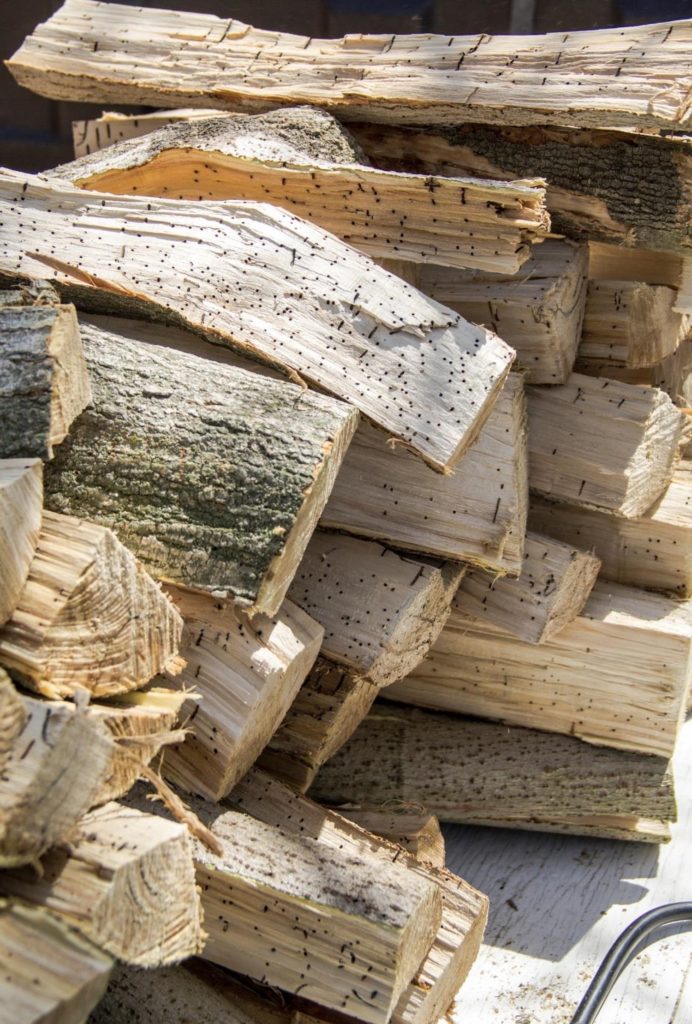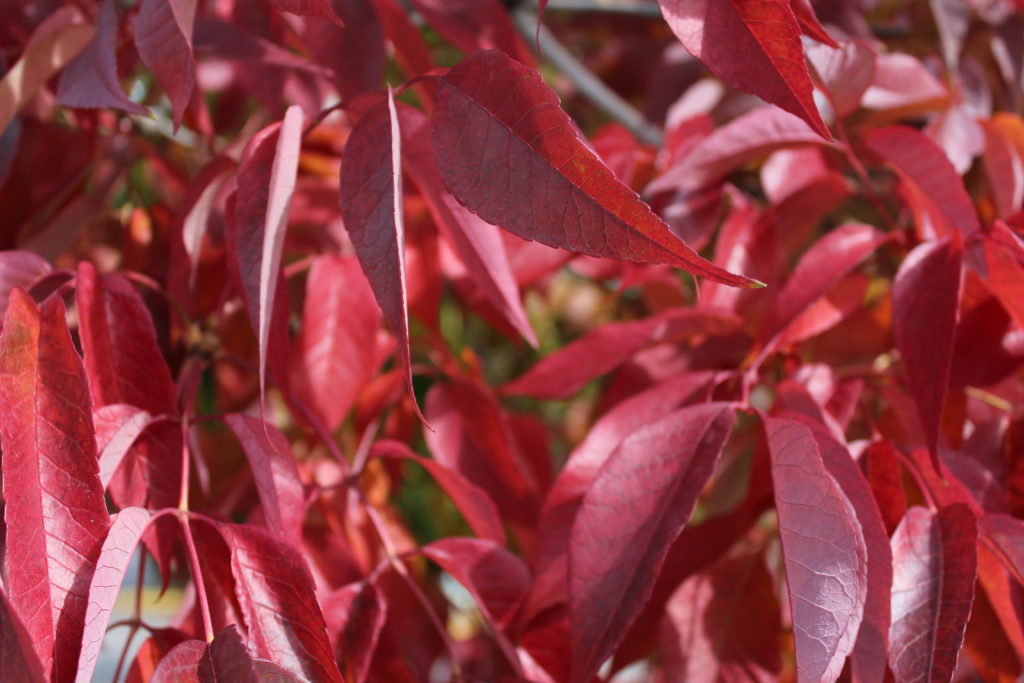Last updated on February 8th, 2024

Forested landscapes across the U.S. have always included insects, diseases, fungus, and other native pests as part of their ecologies. These native pests are just one of many types of natural disturbances that are part of the dynamic balance that makes up each unique type of healthy forest. Historically, these disturbances created opportunities for each type of forest to reach its peak biodiversity and resilience. Thanks to regional and ecological variation, each forest type supports biodiversity in a variety of different ways. In some forests, the age, species, and variety of the trees are crucial drivers of biodiversity, while in others, patches of other ecosystems, like grasslands, come and go over time. Healthy forests are often made of slowly shifting mosaics of habitats, all supporting their own communities of plants and wildlife.
Invasive pests don’t function as a healthy disturbance in the same way as native pests that co-evolved with the forest. Moreover, in some places, the natural ups and downs that have allowed forests and native pests to thrive in a balance over time and space has been disrupted.
Forest pests that come from overseas or from far away ecosystems way across the continent are termed invasive species if they cause serious damage to the trees they infest or infect. Because they did not evolve in tandem with the trees in their invaded range, they can be extraordinarily damaging or even deadly to the trees they attack. In the 1900’s, invasive forest pests like the chestnut blight and Dutch elm disease practically eradicated American chestnuts and American elms from our landscapes, and the more contemporary threat of the emerald ash borer has wiped out more than 100 million ash trees in just about 20 years.

Invasive shot hole borers are killing California trees Photo Credit B. Nobua-Behrmann/UCCE San Diego
Other large disruptive forces affecting our forests that have grown over the last 200 years – including changes in land use, fire suppression policies, unsustainable logging practices, and ecological shifts driven by climate change – have led to less resilient systems for native forest pests as well. For example, insects that prefer trees of a specific age may attack vast stands of similarly-aged trees that grew in the aftermath of a catastrophic wildfire. As a result, these trees are vulnerable to far higher densities of attacking insects than those in more varied landscapes experiencing a multi-year pattern of smaller, less severe, fires. These disruptions have had significant impacts on U.S. forests – including to their ability to sequester carbon.
To better understand the magnitude of the impact pests have had on carbon sequestration in our forests, a multi-disciplinary group of scientists collaborated to produce a new study, “Insect and Disease Disturbances Correlate With Reduced Carbon Sequestration in Forests of the Contiguous United States.” Our research found that forests damaged by insects sequestered 69% less carbon, and those damaged by disease sequestered 28% less carbon, when compared to forests not impacted by one of these severe disturbances. Put another way- the study found that the damage currently being caused by insects and diseases across the lower 48 states is reducing the carbon sequestration potential of America’s forests by roughly 50 million tons of carbon dioxide each year – a lost opportunity to annually sequester the equivalent amount of carbon dioxide emitted each year by more than 10 million cars.
It’s important to know that our study indicates the majority of US forests continue to sequester more carbon than they release. On a landscape scale, forest insects and diseases have not, on average, converted forests from carbon sinks that remove and store carbon to carbon sources that increase the amount of carbon into the atmosphere. But it is very clear that forests impacted by recent and severe insect and disease disturbance have a greatly reduced capacity to sequester carbon. Fortunately, this is a problem we can do something about.
In my role as The Nature Conservancy’s Forest Health Program Director, it’s my job to figure out how we can work with our partners to reduce the impacts on non-native forest insects and diseases across North America. This includes prevention, early detection of new threats, and management of pests already present, as well as long-term programs like pest-resistant tree breeding and biological control organisms. With the information provided by this study, The Nature Conservancy and its many partners can better advocate for the research, science-driven policies, and impactful action needed to contain this threat.

To address the long-term shifts in forests that have enabled native forest pests to reach unnaturally high levels of damage, locally specific management strategies can be deployed to bring forests back into better function and balance. For instance, practices such as ecological thinning and prescribed fire can increase the resilience of historically fire-dependent forests by promoting biodiversity and variations in tree age and spacing. By supporting the overall resilience of these forests to the natural disturbances they face, their carbon sequestration potential can be maintained over time. The stability of that carbon storage is vital to global efforts to address climate change. While some fluctuations in carbon storage are normal and necessary, we must work together to avoid catastrophic disturbances that can significantly damage our forests.
For those pests that have not yet arrived in North America, preventative strategies are crucial to ensure we don’t face faster and more severe tree loss in the future. The global community needs to strengthen shared policies that prevent new non-native forest pests from accidentally traveling along the international supply chain. Improving and enforcing the existing treatment standards for solid wood packaging materials such as pallets and crates can play a key role in preventing new pests from sneaking into U.S. forests.
Within the U.S., federal policies governing the importation of nursery and cut plant stock (such as cut flowers, and tree saplings) could be refined and better enforced, thereby more effectively preventing invasive species that travel on live plant materials. Together, a stronger preventative approach will allow us to maintain our healthy forests without additional pests- and the yet-unknown threats that they may pose.

When invasive forest pests have become more established in the U.S., it becomes very important to create programs that mitigate those losses, whether through “slow the spread” programs (such as the Don’t Move Firewood campaign), seed banking, tree breeding, biological control research, or a wide variety of other interdisciplinary approaches. Controlling the movement and damage of invasive forest pests can reduce losses for years – or even decades – protecting precious biodiversity and carbon storage in forests across the country. With rapidly advancing science in the field of conservation genetics, the potential for new solutions to be brought to scale to help contain these established pests is very exciting. But without diverse populations of the trees we want to protect, the long-term research and implementation of conservation programs based on new technologies might falter.
Maintaining forest carbon sequestration rates in the face of insect- and disease-based disturbances also provides powerful co-benefits including cleaner air and water, improved wildlife habitat, reduced risks to people living in fire-adapted forest landscapes, and stronger local and rural economies. This research shows that a very wide variety of actions we can take to protect forests from insect and disease disturbances- whether internationally, regionally, or locally- can result in healthier trees that will ultimately support a healthier climate.
Leigh Greenwood is the Forest Health Program Director at The Nature Conservancy.
